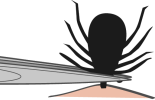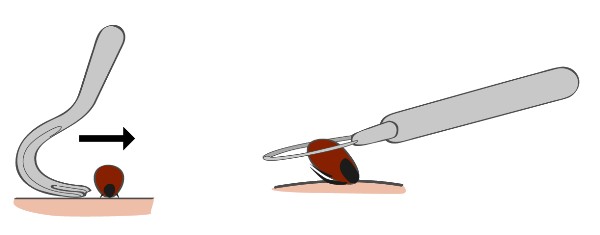Allwinds Top Tips - Ticks!
- Allwinds
- May 1, 2019
- 3 min read

Ticks are small spider like creatures (in fact they are related to the spider family) with eight legs when they reach the adult stage. Adults have oval or pear shaped bodies. All ticks belong to two families, IXODIDAE (hard ticks) or ARGASIDAE (soft ticks) and can be found all over the world.
Ticks are parasites that need a host to feed from – they feed by sucking the blood of the host... yup, gross! This can be you and your dog.
There are four stages to a tick’s life – egg, larvae, nymph and adult. Larvae, nymph and adults spend most of the time on the ground in leaf litter, grassy areas and ferns. They only leave this to find a meal (no pizzas here!) To do this they wait on a long piece of vegetation for a passing host to latch onto. They can’t jump or fly. This is known as ‘Questing’ Ticks only feed once at each stage of their life cycle and then drop off onto the ground to moult to their next stage.
It is very often hard to know that a tick has attached itself as the salvia has an anesthetising effect. It will bury its mouth part under the host skin with the rest of its body still visible.
Ticks can also carry diseases for both you and your dog. Ticks can cause a disease called Lyme Disease which affects muscle and nerve cells. Signs in a dog can be loss of appetite, lethargy, swollen joints, high temperature and lameness. If at all worried, visit your vet as soon as possible. In humans the most distinctive sign is the ‘bull’s-eye’ rash on the skin where the tick was attached. Most don’t even notice they have been bitten. Other symptoms may include, fatigue, fever, flu like symptoms, nausea, headaches and a stiff neck. If at all worried, talk to your GP.
If you need to remove a tick from your dog, use a tick remover. The O’Tom tick remover is designed to get under the tick without squashing its body then twist and remove. If you are using tweezers, these need to be pointed and not blunt ended. Grasp the tick as close to the skin as possible and pull without twisting. There may be some resistance. DON’T rub oil/chemicals onto the tick, burn it with a cigarette, try and pull it off or squeeze the body of the tick. You may end up with the tick regurgitating its stomach contents back into your dog causing illness or you may leave body parts in the dog’s skin which can cause an infection.
Tips for avoiding Ticks for yourself and your dog
1) When out walking, wear long trousers and long sleeved tops. – a light colour may help detect any passengers! If space allows, try and remove your outer clothing before entering the house after a walk. Tests have shown that ticks can survive a full washing cycle and a short time in the tumble dryer!
2) Apply insect repellent to yourself... always follow the manufacturer’s instructions.
3) Keep your dogs tick treatment up to date.
4) Walking on paths and away from vegetation may help reduce the chances of brushing past a waiting tick.
5) Carry a tick remover – remember to disinfect it if it has been used and wash your hands. Ideally, you should wear gloves when removing a tick.
6) If possible (and if you can bear the thought) keep the tick in a sealed container or in a sealed food bag in the freezer for a few weeks after removal. If your dog starts to show symptoms then take the tick with you and your dog to the vet. This will really help the vet with any treatment your dog may need.
7) Groom your dog after a walk. Ticks can take some time to find their ideal ‘feeding’ spot. This may be your window of opportunity to brush off the tick before it attaches itself. Also check your dog’s ears, around the eyes, chin, muzzle, pads and toes.
COMPETITION
For your chance to win a free O’Tom tick remover, answer the following question:
What is the name of Allwinds assistant director? Email your answers to info@allwindsdogfirstaid.co.uk by 21st June 2019







Comments